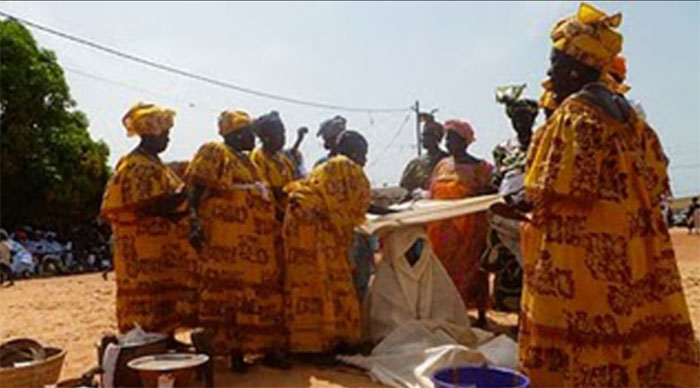Dakar, quand les génies se fâchent
-
Réalisé par Catherine Clément, Philippe Costantini • Écrit par Catherine Clément, Philippe Costantini
-
France • 1998 • 43 minutes • Couleur
- Réalisation :
Catherine Clément, Philippe Costantini - Écriture :
Catherine Clément, Philippe Costantini - Image :
Philippe Costantini - Son :
Jean-Claude Brisson - Montage :
Anne Weil
- Production (structure) :
Cinétévé - Diffuseur :
La Sept ARTE - Participation :
CNC, Procirep - Ayant droit :
Cinétévé
- N° ISAN :
ISAN 0000-0001-70D8-0000-L-0000-0000-B
Résumé
Le rite le plus spectaculaire d’Afrique se joue pendant cinq jours et cinq nuits, dans la grande banlieue de Dakar. Longue cérémonie magique destinée à la guérison des fous, le N’Doep appartient au petit peuple des Lébous, ethnie du Sénégal qui s’est constituée très tôt en République désormais intégrée au Sénégal. La cérémonie se déroule dans la concession de la famille du malade. Le diagnostic s’impose chez les Lébous dès lors qu’un membre de la famille africaine est affectée par un comportement anormal, parfaitement codé : frissons, mélancolie, passivité extrême, perte d’appétit et de rêves. D’eux mêmes, impuissants à soigner ces symptômes avec les antidépresseurs, les médecins formés à l’occidentale orientent volontiers ces "déprimés à l’africaine" vers le traitement traditionnel, seul adapté à cette situation. Il s’agit de "guérisseurs", de femmes, et s’il trouve un guérisseur, il faudra qu’il s’habille en femme pour officier. Le rite du N’Doep appartient aux femmes, et à elles seules.
The "N’Doep", a major rite among the small ethnic group of Lébou, lasts several days. The object of this long magic ceremony is to heal the sick who are suffering from mental disorders, depression or organic disorders of psychological origin.
A mix of pagan rite and Islam, it attracts an audience of several hundred people. It gives rise to spectacular trances : the sacrificial acts aim to transfer the disturbing spirit from the body of the sick person into the body of the sacrificed animals.
At Gueule-Tapée, in the suburbs of Dakar, the film-maker was privileged to have access to a "N’Doep" and was able, over a whole week, to record the various public and secret phases. Interviews with the doctor Erik Gbodossou, a Senegalese psychiatrist who is a specialist of this rite, and the officiating priestess N’Datté, who is also a midwife at the hospital in Dakar, help us to understand the working and the developments of this rite.
Comment avoir accès au film ?
-
Édition DVD
- Il n'existe pas d'édition DVD à notre connaissance
-
Accès VOD
- Il n'existe pas d'accès en VOD à notre connaissance
- Distribution
- Aide sur les moyens d'accéder à un film
